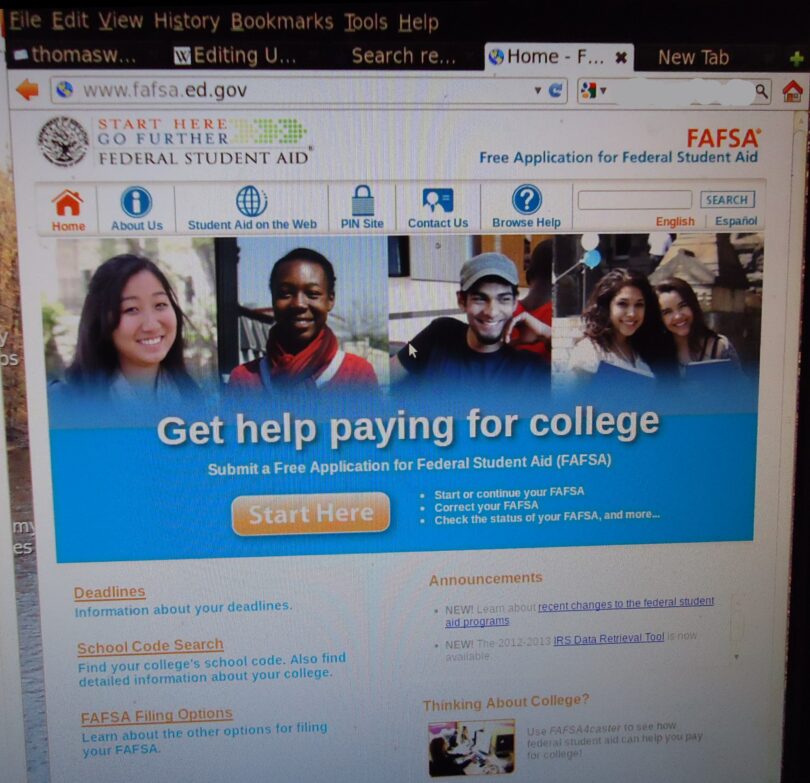
Written by Stacey M. Brown
NNPA Newswire Senior National Correspondent
@StacyBrownMedia

Amid growing concerns over the turbulent development of the new Free Application for Federal Student Aid (FAFSA), the U.S. Department of Education announced an initiative to provide much-needed support to students and families navigating complex financial aid situations. .
“We are determined to close the FAFSA completion gap,” declared U.S. Deputy Secretary of Education Cindy Marten. The initiative comes amid frustration and anxiety among applicants as the application process is beset by technical glitches and bureaucratic hurdles, leaving many students at a loss.
The U.S. Department of Education's millions of dollars invested in FAFSA student assistance strategies is a testament to its proactive approach. This strategy aims to increase completion rates and empower different organizations. This allows organizations to expand their advisory services and extend support hours to include evenings, weekends, and summer weeks to help organizations feel valued and integral to the process.
Additionally, this initiative will facilitate submission clinics, strengthen communication channels, and provide critical support to applicants and their families, especially those from marginalized communities. “The funding we are announcing today will support states, districts, and community-based groups to ensure that all students who need help paying for college can complete their FAFSA form,” Marten said. refused.
The department's efforts reach a critical juncture as students across the country grapple with the effects of delays in aid packages and uncertainty surrounding college decisions. Kenneth Seinsin, a 17-year-old from New York City, shared his difficult journey through the FAFSA process, highlighting the stress and frustration experienced by many applicants. “The whole process was really stressful,” Seinsin lamented to a New York Times reporter.
Similarly, Clover Schwalm, an 18-year-old from Michigan, told the paper she was concerned about making college decisions without complete financial information. Schwalm said that despite the challenges he faces, he remains hopeful and recognizes the importance of an accessible and inclusive educational environment. “While it's not the best, we also recognize that there are states where it may be less safe,” she said.
As the department ramps up its efforts to alleviate FAFSA problems, attention is being focused on the observed decline in completion rates among high school seniors. Data analysis by the National College Attainment Network reveals a significant drop in the number of completed financial aid applications compared to previous years, raising questions about equitable access to higher education.
“The FAFSA completion data buys into a bad story and makes it worse,” Bill DeBerne, senior director at NCAN, which tracks FAFSA applications, told reporters.
Republican West Virginia Governor Jim Justice even declared a state of emergency, citing persistent problems with the FAFSA form. “I don't think any other state in the country has gone this far, but we simply cannot and will not stand by while funding is put on the table to help students continue their education,” Justice said. said in a press release. “When a student is unable to complete the form due to issues within the sole control of the federal government, there are limits to what assistance we can provide. We are left with no choice but to suspend FAFSA requests for state financial aid programs. not.”
With only three months left until fall classes start, many high school seniors still need to know where they'll go to college after the rollout of the new FAFSA form failed. Many applicants are waiting for financial aid offers. “The department needs to get this right and quickly,” said Sen. Tammy Baldwin (D-Wis.).
Education Secretary Miguel Cardona added that “the rollout of a better FAFSA is fraught with delays and challenges.” Cardona told the Senate committee that the new FAFSA form should be shorter and easier. Still, the number of successful applications is down about 30% from last year due to processing errors and other issues. “We’re doing everything every day to get it right,” he said.


